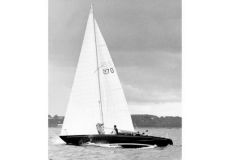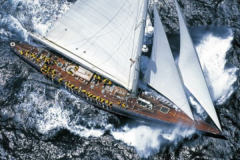From aviation to navigation
Eugène-Marie Cornu was born on September 26, 1903 in Lorient and grew up in Nantes. It is from the window of his house, on the banks of the Loire, that he observes the boats tacking on the river. This is how he came to determine the most successful plans. His father is a naval mechanic, but it is thanks to one of his uncles - a tracer at the Chantiers de l'Atlantique in Saint-Nazaire - that he learns to trace the hulls of boats.
He started working for Nieuport, a now defunct aircraft manufacturing company near Paris, in October 1919. He was then an apprentice draftsman. After the sale of the aeronautical company, Eugène Cornu applied for a job as a draughtsman at the Jouët shipyard, where he would make his mark on history. As part of the interview, the young draftsman was asked to sketch the shaft line of a 16 m motor yacht. He was hired on 1 er february 1923 by Paul Jouët and joined the shipyard of Sartrouville.
Self-taught and holding a simple school certificate, he learned a lot from Paul Jouët, a polytechnician and marine engineer, and from Victor Brix, a former engineer who became a naval architect. He began by designing 7 and 9 m service launches for the Navy, attached to the shipyard's design office.
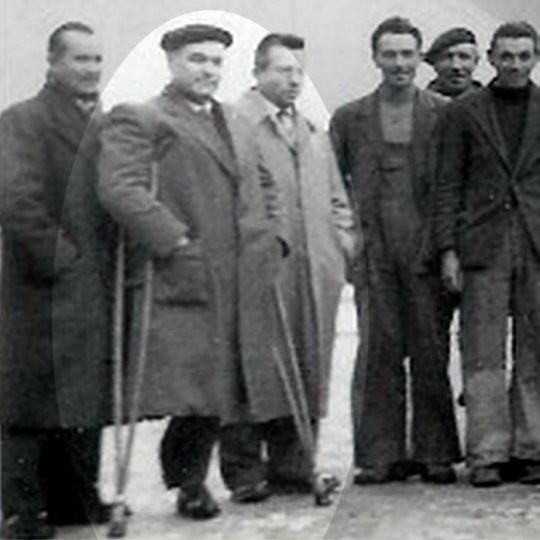
First drawings of racing sailboats
Fascinated by racing yachts, he studied the international series and began to design his own boats. His first design was Lina, an 18-foot International Gauge, which appeared in the magazine Le Yacht on December 8, 1923. A year later, Myriam, a 6 m JI, followed in May 1925 by an 8 m JI, this time signed by the " naval architect "Eugène Cornu. He was 22 years old and no longer a simple draftsman. In 1930, he finishes 2 e a design competition for a 5m international series sailboat, behind Victor Brix.
In 1936, Eugène Cornu was put in charge of the design office and the wood yard at Jouët. In 1942, he responded to a call for proposals from the French Sailing Federation. He designed two one-designs of 4.80 m and 6 m euros, La Licorne, which was mass-produced and rewarded by the press for its seaworthiness.
Until 1948, he designed several dozen boats under the signature of the Jouët shipyard, including several large units for the time: a 9.35 m offshore cruiser or Louki III, a 12.30 m long Norwegian stern cutter.
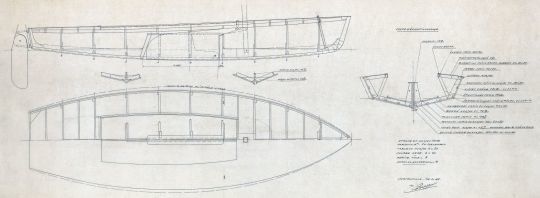
The Belouga, the trademark of Eugène Cornu
But it is really the Belouga, a 6.50 m ballasted dinghy launched in 1943, that marks the launch of his career. Its hull shape was inspired by the Unicorn, a characteristic that no doubt prompted Olympic champion Jacques Lebrun to request this design. No one could have imagined the success of this boat, which was built for more than 40 years, with more than 1,000 units produced.
After the war, Eugène Cornu was a recognized naval architect. He was one of the founding members of the Society of Naval Architects alongside Henri Dervin and André Mauric. In 1947, he became a naval architect consultant for the Jouët shipyard and at the same time drew plans for his own account.
That same year, he gave life to Jalina, a 13.80 m keelboat, a "racing-cruising" boat that won the Cowes-Dinard race as soon as it was launched, thus consecrating Eugène Cornu's talent. Many of his boats of this category will win during these years.
In 1952, he designed the first 5.50 m JI, then in 1954, the 9 m CR Men Cren, the first cruising yacht built in France according to the new IYRU "Cruiser-Racers" rule. This was the first yacht built by the Pichavant shipyard. This was followed by the designs of several 12m JI and 8m. He worked full time for the Jouët shipyard until 1954, but his drawings were rare, before leaving in 1960. In total, the architect worked with nearly forty different builders.
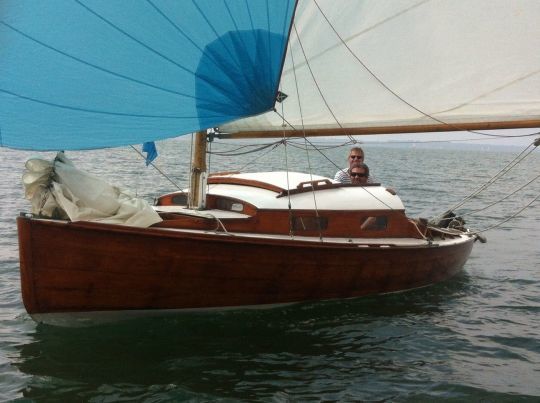
Architect and sailor
If his light dinghies are built in plywood, all the important hulls of Eugène Cornu are in classic wood. Some production models such as the Belouga, the Caneton 57 or the Mousse were adapted in polyester. Eugène Cornu is not only a designer, he is also a sailor. Nevertheless, he prefers inland waterways to the sea where he tests his euro boats on which he sails several of his boats: Belouga, Bar, ballasted dinghy of 8.20 meuros
when he died on February 23, 1987, he asked his wife to destroy his plans. But she preferred to entrust them to the Jouët shipyard, which itself gave nearly 130 original plans to the Musée de la Marine.

 /
/ 




